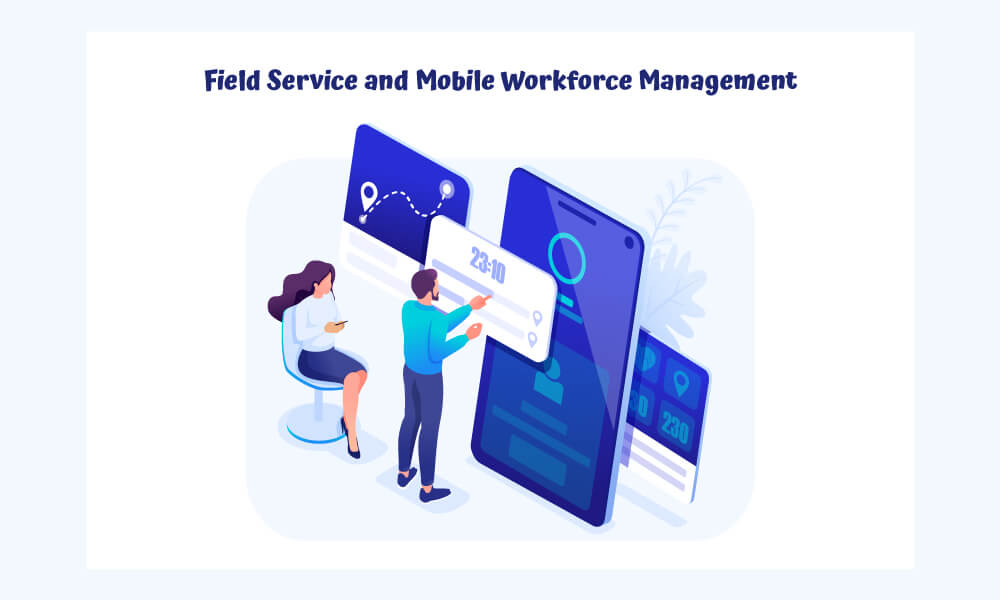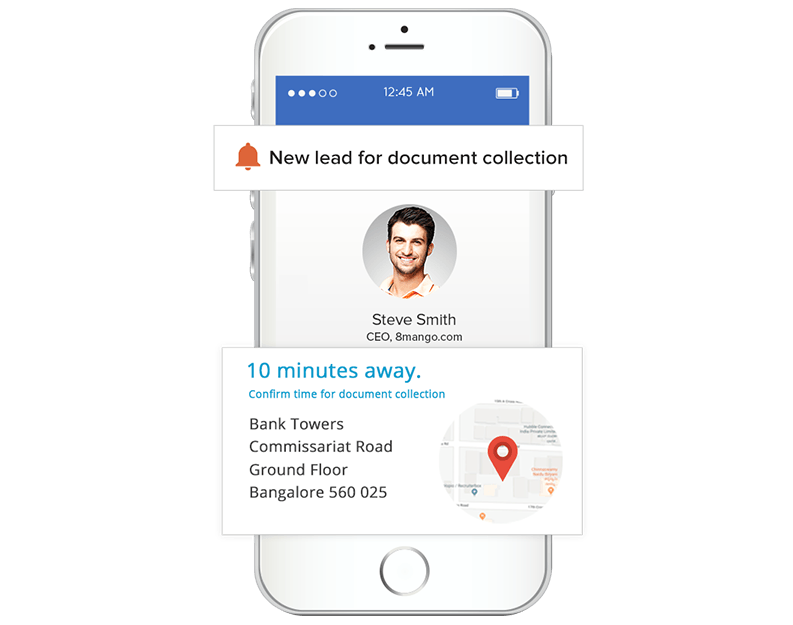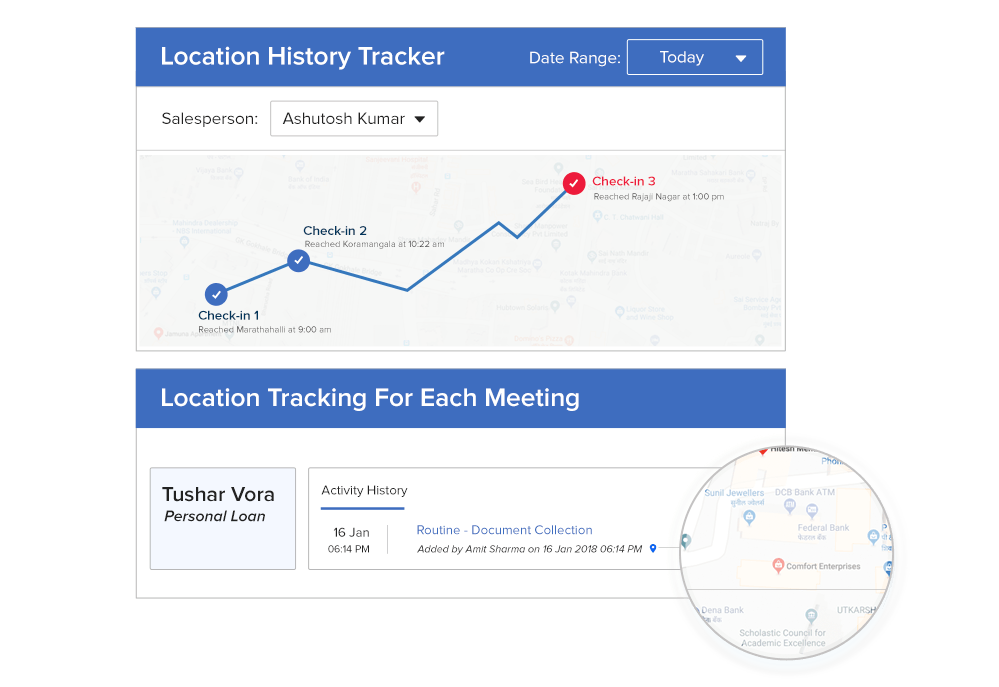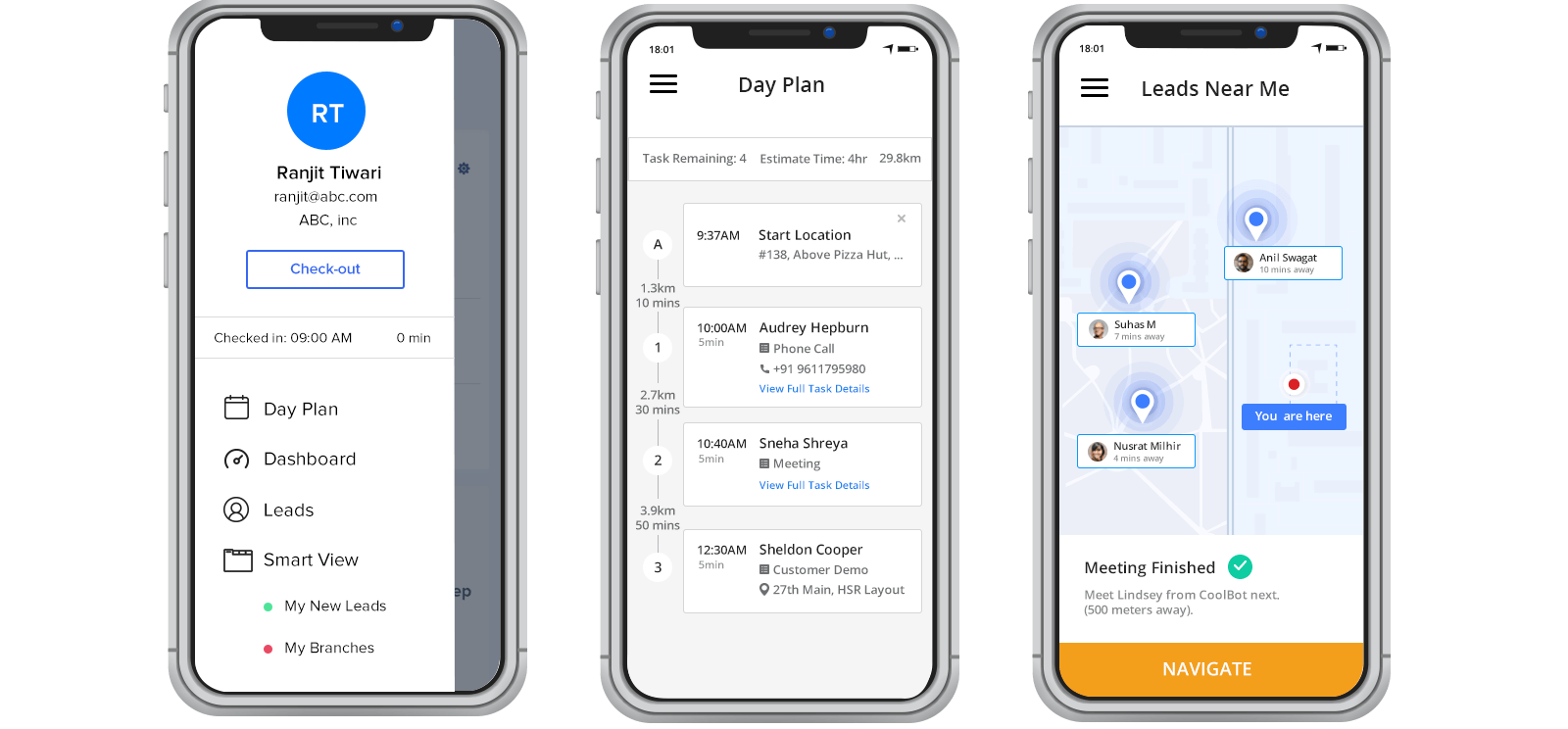Field service and mobile workforce management refers to a system that simplifies customer/vendor onboarding, field sales operations and improves the productivity of field sales agents and remote workers.
Even though the world is going digital, many businesses still require feet-on-the-street teams to connect with vendors, customers, and prospects. The reasons for this face-to-face intervention might be many – to create awareness about the product or services or for sales, service, training, or operational requirements.
For all these and more, companies employ field teams to personally meet the stakeholders. Businesses that need field teams include financial services, logistics, courier, cable services, telecommunications, security services, engineers, technical equipment services, healthcare providers, medical emergency services, vehicle breakdown and restoration personnel, surveyors, retailers, merchandise sales personnel, and more.
To improve business flexibility, your field technicians need lightweight mobile devices rather than heavy clipboards. For this, field service and mobile workforce management system is a feasible solution.

In this article, we will talk about the challenges in traditional workforce management and how modern-day field service CRM apps and remote workforce management software can help. But first, a quick look at the prevailing issues in field-team management.
Flaws in traditional workforce management
Managing sales reps effectively is one of the biggest challenges for a company whose business model relies heavily on employing field representatives.
Traditionally, companies measured the outcome from field sales in terms of the number of deals closed by the field reps. However, this system fails when it comes to scalability. Fast-growing businesses need to achieve more with limited resources. Therefore, productivity becomes a crucial parameter to measure field service or remote workforce success.
Another challenge that growing businesses face is that of employee churn. Many companies rely on third-party services to hire field agents. So, there is no direct connection between the managers and people who are representing the organization on the field. Therefore, managers struggle to gauge actual field activities.
Apart from these, companies use reports and other statistical methods to evaluate agents and teams. But these evaluations generally happen only at the end of a specific period. Therefore, companies fail to devise a solution to overcome bottlenecks instantly. The repercussions are severe – lost opportunities and an inability to gauge team productivity and suggest corrective actions.
The point is – managing a mobile workforce is not the same as managing internal employees. Employees serving customers on site require different tools and resources to perform their tasks effectively and meet customer needs.

The modern-day field service and mobile workforce management software address this concern. Let us see how.
What is field service and mobile workforce management software?
Field service and mobile workforce management software ensure process automation for field staff. Your field force, such as sales reps, service technicians, or agents, can carry the mobile field force management software (app) whenever they are on a field visit. It helps you track their progress in real-time, provide support, and plan further activities. So, you can achieve the following objectives:
- Create optimized schedules for field agents
- Communicate with remote workers in real-time
- Track agents, and geofence their location to prevent false reports
- Evaluate employee performance
- Delegate new jobs to mobile workers while they are on the field
- Prioritize tasks
- Provide instant help and guidance whenever required
- Provide route guidance to save traveling time
- Identify more prospects nearby, to get the most out of every day out

Ultimately, remote workforce management software provides essential tools to assist remote workers, improve overall efficiency, and ensure customer satisfaction.
However, the catch is – many times, managers end up providing different tools for different purposes. This approach is not fruitful because now agents will have to juggle between apps for a particular task. For example, field teams use Google Maps for finding routes, Trello for checking assigned tasks/making notes, Slack for communicating with the manager, and Email/WhatsApp for collecting documents. Plus, after the field trip, agents must report to the office and update the details in your internal ERP system. All these tasks are counterproductive – yes, they might somehow allow you to track what your agents are doing, but at the cost of their efficiency. It is something no sales-led organization can afford.
When your goal is to improve their productivity, you must invest in a solution like a mobile CRM (customer relationship management) app for end-to-end field service and remote workforce management.
How mobile CRM simplifies remote workforce management?
Today, 61% of the workforce is working outside the office, at least some of the time. Earlier, what used to be applicable for field sales teams only, is now required for in-house teams as well.
In such instances, when the workforce is invisible to management, monitoring productivity, identifying pitfalls, motivation levels, and efficiency can be a daunting task for managers.
Therefore, companies are using newer methods to enable their remote teams, track team progress in real-time, improve user experience, and more. The following are the ways in which mobile CRM can streamline field service and remote workforce management.

Field team and back-office connectivity
Remote labor management is a relatively recent development. In the past, mobile workers struggled to stay connected to the office and get the support they needed to get their jobs done. Many times, when these people had problems, they could not solve them without going back to the office.
Field service and mobile workforce management platforms provide a solution for this by allowing employees to communicate with office workers, report critical information, share and access data in real-time, and more.
For managers, these platforms streamline the planning process for employees and help analyze productivity in one single tool.
Meet customer expectations
Business success depends on meeting customer expectations. However, mobile workers can find it challenging to meet customer needs without the support of their employers. The following are some of the concerns that may arise while representatives are working on the field.
- Are reps punctual? Are they meeting the customers/vendors at the scheduled time?
- Sometimes, field reps may misrepresent a meeting as completed, but, in reality, they had not attended/organized it.
- How to ensure equal distribution of meetings among agents/reps? Is an agent overloaded with tasks and missing out on customers?
- Are the field reps understanding the needs of the customers and providing appropriate solutions?
- Back and forth meetings with the same customer/vendor just because some information is missing.
Field service and mobile workforce management solutions overcome these obstacles. With adequate information about customers, companies can provide better information about customer behavior, wants, and needs and also give up-selling/cross-selling signals wherever relevant.
To process things faster, field teams can upload all the vendor/customer documents via an app, which the verification team in the office can check in real-time and tell if something is missing or out of order. It will save the agent’s time and efforts in revisiting the client.
Having the right tools further eliminates the need for face-to-face meetings to a great extent. For instance, video KYC tools can save in-person meetings for both parties – customers and agents.
Handle a diverse workforce
The past consisted mainly of full-time internal workers who worked the usual 9 to 5 hours. However, in recent years it has become increasingly common for companies to diversify their workforce to include part-time and contract workers. These types of employees often have different needs than traditional full-time employees.
For this reason, organizations need to adopt a mobile workforce management system that provides full-time, part-time, temporary, and contract workers the support they need without affecting productivity.
Why companies need a mobile workforce management app?
Let us take an example.
In the early years of foundation, BigBasket, India’s biggest grocery e-commerce marketplace, wanted to optimize its operations. One of the challenges they had was to improve the productivity of their delivery staff. The business problem was if a van does sixteen deliveries in a day, then what should they do to get the same van to accomplish twenty deliveries or more.
Asking people to over-time every day is not a viable solution. Investing in additional resources will only increase operational costs. In a competitive market, where margins are minimal, businesses cannot invest in adding resources exponentially. The only feasible solution is to increase the productivity of the field teams. Thus, BigBasket used technology to automate routing.
Different businesses have different use cases of mobile workforce management. What remains the same for all is the necessity to improve employee productivity and satisfaction. Good customer experience is just a pleasant side effect.
Another aspect to look at is – unengaged employees are a drag on productivity Plus, employees are more likely to leave their company when their engagement and well-being are low. On the other hand, highly engaged teams show a 21% greater profitability.
An essential aspect of maintaining a high level of employee wellness and engagement is ensuring effective communication and support for employees. It is possible to support your remote employees by introducing a full field service and mobile workforce management platform.

Tools such as mobile CRM apps help managers to create better schedules, keep accurate records, optimize mobile operations, understand customer trends, and perform other critical administrative tasks. They also help field agents with automated day plans, meeting recommendations, getting upselling/cross-selling signals, and more.
Things to consider before investing in a field service solution
You need to consider the following points to ensure your investment in field service and workforce management solution drives results.
- Meet customer expectations: With the growing amount of information and the ability to access data quickly, customers now expect a faster resolution to their queries from brands.
- Stay competitive: A customer/vendor who shows interest in your business today might completely forget about you tomorrow. Therefore, you will also need solutions that can minimize the onboarding time.
- Often, most management teams start with the assumption that setting up and deploying mobile solutions will require a high upfront capital cost. Custom field service solutions generally offer fast deployment speeds, low upfront costs, and the flexibility to scale up or down as the business changes.
- Instead of reminiscing about the good times, focus on how you can grow your business. Increasing growth and the level of service is the goal of most companies. The software solution should be customizable and futuristic to adapt to your changing business needs.
What to look for in a practical solution?
The success of field service and mobile workforce depends on implementing a system that meets employee needs and gives managers the tools they need to manage their workforce.
Complex platforms lengthen the onboarding process, prevent more generous use of the platform by employees, and can reduce productivity. Therefore, the interface should be intuitive enough that 1000s of users can understand and use the system with minimum training efforts.
To achieve organizational goals and progress in the right direction while implementing new programs, you must look for a platform that offers extensive customization options and overcomes the barriers facing the organization.
Lastly, field service and mobile workforce management offer several benefits, such as proper and timely billing, accurate planning of FS staff, making the most of their time, selling related products and services on-site to customers. It reduces capital and storage costs, improves staff efficiency, and helps management make better business decisions.
If you are looking for a solution to manage your field teams, you must try the LeadSquared mobile CRM app once.







